-
-
Notifications
You must be signed in to change notification settings - Fork 774
Debugger Hardware
Black Magic Probe firmware can be compiled for many different target platforms. Here is a short list with descriptions of different targets.
The following is a list of official hardware supported by the Native target that is the default compilation target of Black Magic Probe firmware. All revisions of the native hardware work with the same firmware binary.
TODO: Add photos
Status Active
Source Vendors
Schematic bmpm_v2_1c_schematic.pdf
Same form factor as the predecessor BMPM2. Following is a list of main differences to the predecessor relevant to an end user.
- Replaces the TXS0108 bidirectional level shifter with dual supply 74LVC2T45 bus transceivers. This improves the line drive strength and expands the target voltage range to 1.8V-5V (previous design was limited to 1.8V-3.3V)
- Dedicated reset line drive MOSFET circuitry with 10k pull-up ensuring good open-drain RST line drive with monitoring.
- Exposed the BMP side SWD lines on dedicated pads, allowing for easier programming and debugging of the probe firmware. It is much easier now to program and debug the BMP firmware using a second BMP. The pinout is compatible with the SWD adapter by 1Bitsquared.
- Increased LED distance from each other for better visual separation.
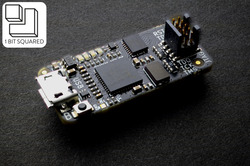
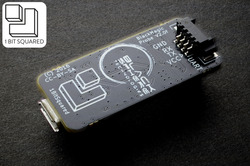
Status Legacy (not in production)
Source Vendors
Schematic bmpm_v2_0f_schematic.pdf
Same form factor as the predecessor BMPM1. Following is a list of main differences to the predecessor.
- Adds TXS0108 level shifter for wider range of targets. This will add support for low voltage targets that run on 1.8V.
- Uses two MOSFET to prevent powering the BMPM in reverse through the MOSFET body diodes.
- Uses USB Micro connector as it is by now more wide spread than USB Mini.
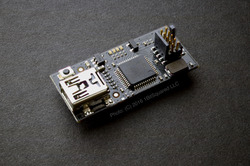
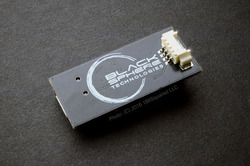
Status Legacy (not in production)
Source Vendors
Schematic blackmagic_mini.pdf
Small version of the Black Magic Probe also known as BMPM1. The form factor was inspired by the Floss JTAG FTDI based adapter. The board offers an ARM Cortex 0.05" 10Pin connector on the top of the board and a Molex Picoblade 4Pin UART serial connector on the back of the board.
The board has a MOSFET to switch 3.3V power supply to the target in place of the jumper on the original Black Magic Probe.
This board does not buffer the JTAG or serial pins in any way, they are connected directly to the STM32.
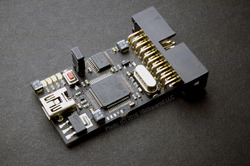
Status Legacy (not in production)
Schematic blackmagic-1.0.pdf
The original first hardware. Offers a legacy ARM JTAG 0.1" 20Pin connector. Some of the pins of the 20Pin connector carry TX and RX of a serial interface. This makes the connector not 100% compatible to a default 20Pin JTAG connector.
The board has a physical jumper to switch 3.3V power supply to the target.
JTAG IO is buffered through a TXS0108 Texas Instruments bidirectional level shifter. UART signals are connected directy to the STM32.
It is possible to run the Black Magic Probe firmware on your PC and have it bit bang using a USB attached FTDI adapter. This is very slow but can be used for debugging and testing purposes of the Black Magic firmware.
You can compile the firmware for an ST Link debugger. These are often included on ST Discovery evaluation boards. You can replace the ST Link firmware on your discovery board with Black Magic Probe firmware. Usually this leads to more stable operation and easier use than the ST tools. There is are several tutorials for how to do it even if you don't have a JTAG adapter yet and no way to bootstrap. :)
You can also use a generic STM32F103 board and follow these instructions.
You can run the Black Magic Probe firmware on the "target" processor of an ST F4 discovery board. This among others useful if you want to bootstrap your F4 Discovery board ST Link programmer without having any other means of programming it.
This target is the programmer integrated on the STM8S Discovery board.
This target is the programmer integrated on the TI Launchpad board.